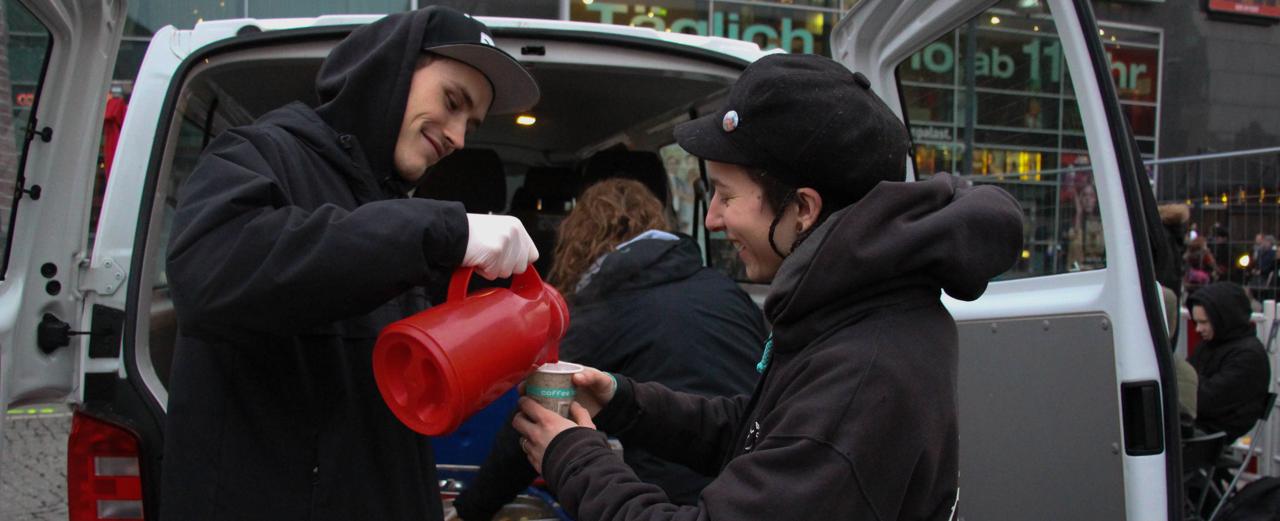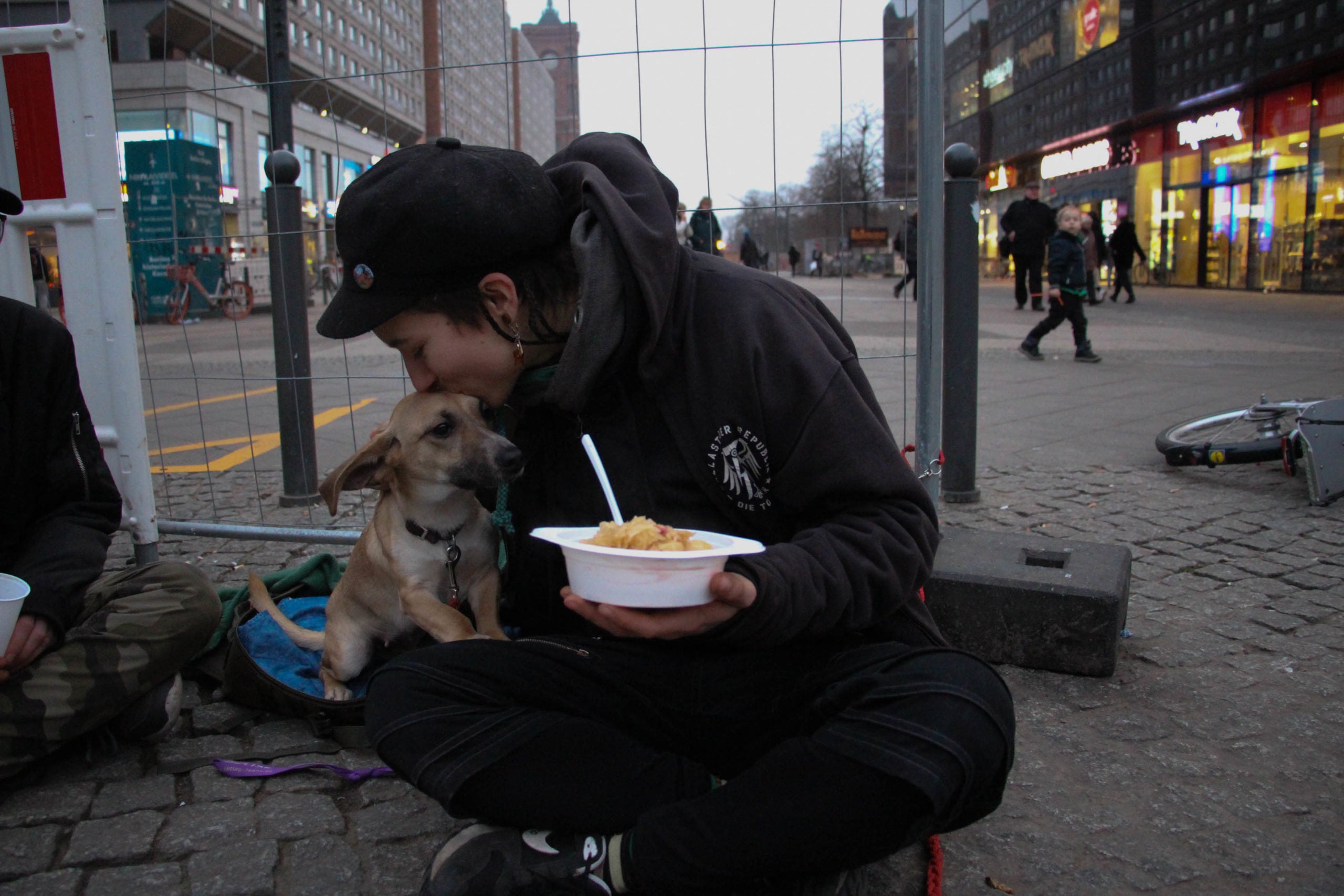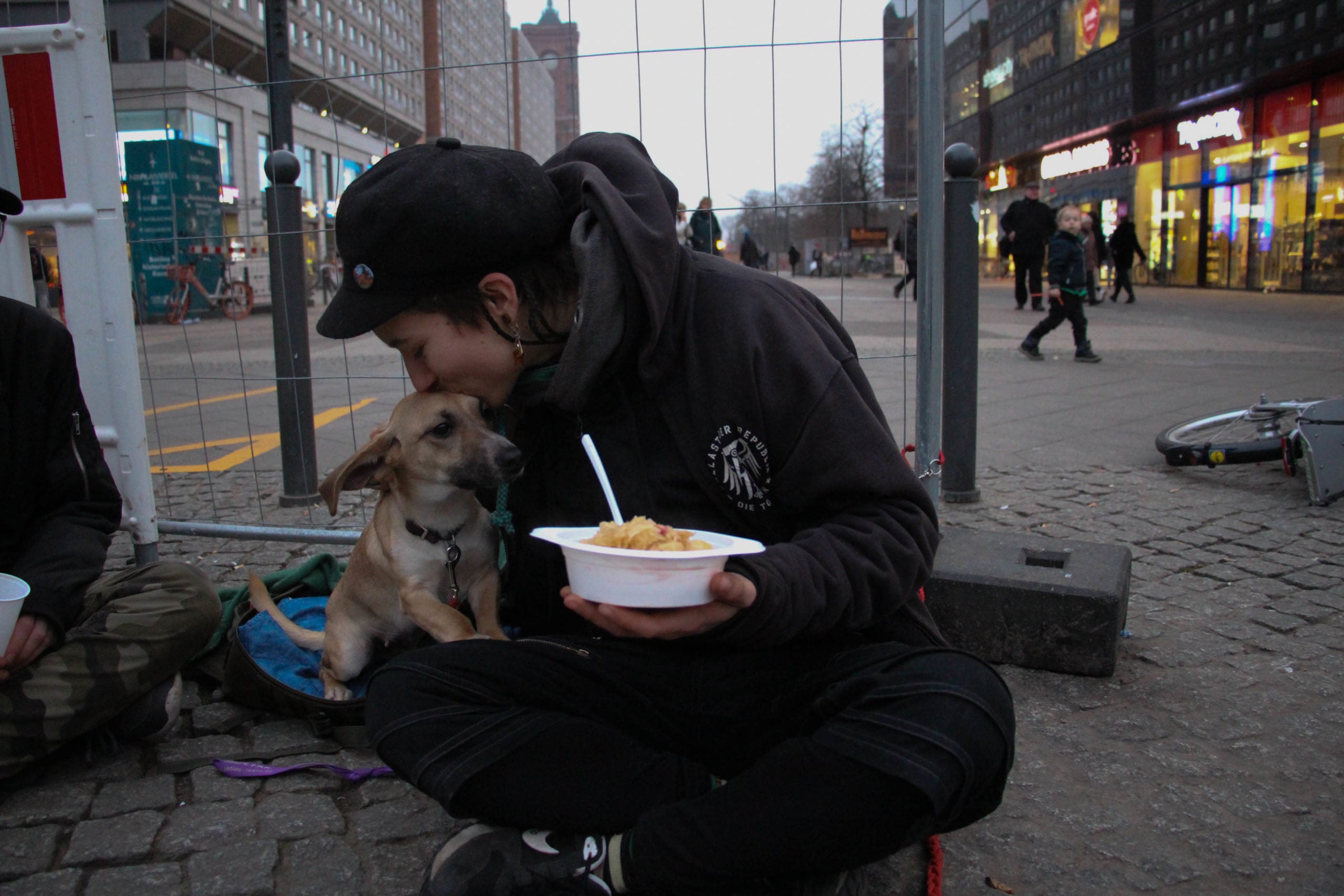Day 6
A food distribution for a street child in Germany
 Together we get children and young people off the streets
Together we get children and young people off the streets


Support for homeless young people

need
Basic care for street children in Germany.
activity
At least 2 food distributions per week at Alexanderplatz in Berlin for young people living on the streets.
Measurable performance
Number of meals distributed to street children in Berlin.
Result
Basic care is ensured, health improves and children regain trust in their fellow human beings.
Systemically relevant impact
In Germany, fewer children live on the streets; former street children have better future and career prospects and more opportunities to participate in society.
background


The good deed
AboutGermany
Berlin
Capital city
83,132,800
Population
$46,946
Gross domestic product
per capita per year
Rank 4 of 189
Human Development Index
(Human Development Index)



